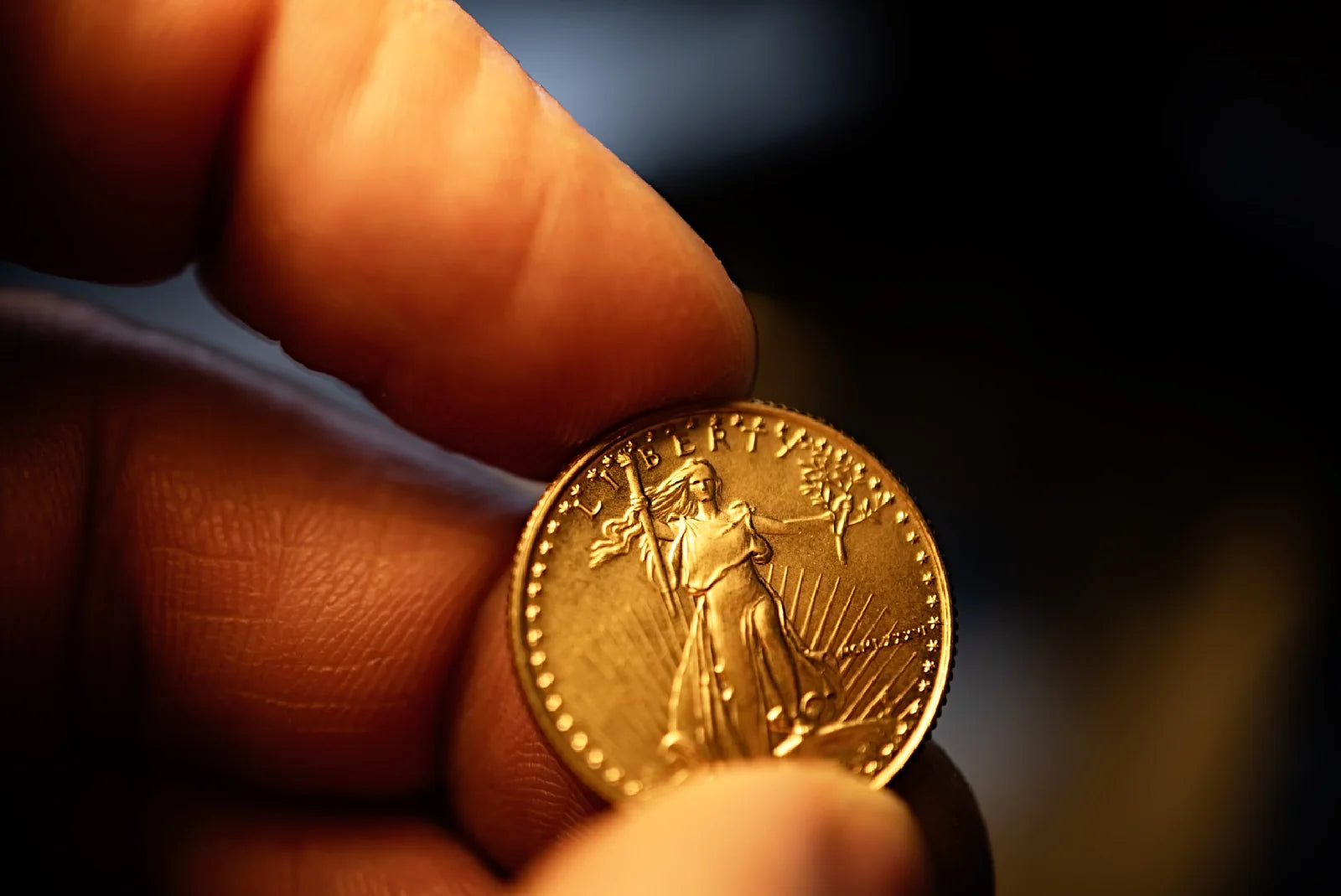Why Do Investors Buy Physical Silver
Silver is a precious metal with a finite supply. Its limited supply and many uses across industries from healthcare to automotive to energy mean it will always be in demand. In addition, it has no counterparty risk when you purchase and hold physical silver. Counterparty risk is the risk that another person or entity will not uphold their part of a contract. When banks or organizations such as FTX fail, investors and depositors lose much – sometimes everything. Those who hold physical silver have an investment that doubles as a hedge against the worst-case scenario. Silver is a multi-purpose investment that can be useful for several investment strategies.
Silver Price History
Throughout most of the 1990s, one troy ounce of silver traded around $5.00. In the early 2000s, the price of a troy ounce of silver began to increase. It has undergone periods of volatility with great movements up and down. Since 1990, the lowest price silver has ever reached was $3.55 in 1991, and the highest price ever reached was $48.70 in 2011. Silver went higher once in 1980 when it went to $49.45 per troy ounce in the wake of a near global financial collapse when the Hunt Brothers attempted to corner the silver market and buy all available silver. They did this by financing their speculative ventures to such a degree that missing a margin call set off a cascade of events that affected not only the price of silver, but also gold and other assets and commodities. In the aftermath, several regulations were put in place to prevent a similar event from occurring. A single individual or entity should no longer be able to take over the entire silver market and create a monopoly.
Advocates of silver point to the 1980 spike in prices a sign for what silver prices can reach, especially in a scarcity environment, and point out that $49.45 in 1980 would be the equivalent of $184.64 in 2023 due to inflation. This puts a theoretical upper limit on the spot price of silver.
Most recently, silver prices have been rallying over $30 per troy ounce and trading in a range of $29 to $33 per ounce, starting May 15th, 2024. This is a 10-year high for the price of silver, and follows gold's historic price movements. As silver has rallied, the gold to silver ratio has dropped to five year lows at times, offering our ratio traders a chance to capitalize on a favorable trade. Forecasters and analysts are predicting silver will follow gold's price movements in the current environment.
Using all-time highs for timing
Sophisticated investors who want to time the market sometimes use all time highs to determine when it’s a good time to buy or sell. The current all-time high is in 1980 at $49.45, however this was due to market manipulation and a near catastrophic system failure that drove prices through the roof. If we look at the next highest price it was in 2011 for $48.70. Investors will sometimes use this information in one of two ways. They will either look at the high in 1980 or 2011 as a flat dollar amount and consider that their baseline for how high silver can go. Others will convert the highs from those years into today’s numbers to account for inflation and consider that the high for silver. In 1980, the high would be equivalent to $184.64 and for 2011 the high would translate to $66.61 in 2023. One way to interpret these numbers are to think about the potential silver can reach in a system failure vs the high silver may reach from normal supply and demand imbalance.
Could Silver Reach $100, $300 or $1,000 Per Ounce?
We cover this topic extensively on the Knowledge Center in our article “Could the Price of Silver Ever Reach $1000 Per Ounce”. Silver is the target of a recurring hype cycle online where pundits, influencers, and some industry leaders begin predicting silver’s price will skyrocket. Although these predictions have circulated for some time, they have yet to manifest.
There are very good reasons to invest in silver. It’s a tangible investment that has stood the test of time. It has no counterparty risk, its value has increased nearly 600% since the 1990s, and its built-in scarcity and utility mean its value will never drop to zero like some investments do. We encourage our customers and readers to do their own research prior to investing in silver, and to invest wisely.
Factors that influence silver prices
Silver prices are influenced by a combination of macroeconomic factors, market sentiment, and industry-specific dynamics. Global economic conditions play a significant role, with factors like inflation rates, interest rates, and overall economic growth affecting silver prices. Market sentiment, influenced by geopolitical events and investor demand for safe-haven assets, can lead to rapid price fluctuations. Industrial demand for silver, driven by its use in various sectors like electronics and green technologies, also impacts prices. Moreover, mining production levels, geopolitical stability in major silver-producing regions, and fluctuations in the value of the U.S. dollar, as silver is priced in dollars, contribute to the overall volatility and trend in silver prices.
One example on the week of November 28th, 2023, may help illustrate how silver prices may move in accordance to market conditions. When the Fed’s Christopher Waller made dovish statements regarding the possibility of rate cuts in 2024, the market reacted strongly. The two-year treasury yield dropped 8.9 basis points and prices of gold and silver both surged. Silver spot price increased 4.21% from the start of the week in response to these market conditions.
How is the Silver Spot Price Determined?
Silver spot prices are primarily determined through commodity futures exchanges like the COMEX (Commodity Exchange). The spot price represents the current market value for immediate delivery of silver. On the COMEX, a continuous auction process occurs where buyers and sellers submit orders to purchase or sell silver futures contracts. The intersection of the highest bid and the lowest ask prices establishes the current spot price. This price discovery mechanism involves a dynamic interplay of market participants responding to factors such as supply and demand dynamics, geopolitical events, economic indicators, and investor sentiment. The COMEX spot price serves as a benchmark for silver valuations globally, influencing various market participants, including miners, manufacturers, and investors.
While the COMEX (Commodity Exchange) is a major platform for silver futures trading and plays a significant role in price discovery, there are other commodity exchanges and markets that also contribute to determining the silver spot price. The LBMA (London Bullion Market Association) is a crucial player in the global precious metals market, and the London Silver Fix, now replaced by the LBMA Silver Price, provides a benchmark for silver prices. Additionally, various futures and commodities exchanges worldwide, such as the Tokyo Commodity Exchange (TOCOM) and the Shanghai Futures Exchange (SHFE), contribute to the broader global pricing of silver. The aggregated influence of these exchanges and the interconnectivity of global financial markets contribute to the comprehensive determination of the silver spot price.
How Silver Futures Influence Silver Spot Prices
The silver spot price represents the current market value of silver for immediate delivery and settlement. It reflects the prevailing supply and demand conditions in the physical silver market. In contrast, silver futures are financial contracts that obligate the buyer to purchase or the seller to deliver a specified quantity of silver at a predetermined future date and price. Futures contracts allow participants to hedge against price volatility or speculate on future price movements. The difference between the silver spot price and silver futures is influenced by factors such as market expectations, interest rates, storage costs, and supply-demand dynamics, making it essential for investors and traders to carefully analyze these variables when engaging in silver-related transactions.
Why are there Differences Between Silver Spot and Silver Future Prices?
Contango and backwardation refer to the relationship between future and spot prices in commodity markets. In the context of silver futures, contango occurs when the futures price of silver is higher than the spot price, indicating market expectations of higher future demand or lower future supply. This situation can arise due to storage costs and interest rates. On the other hand, backwardation occurs when the futures price is lower than the spot price, signaling expectations of lower future demand or higher future supply. Traders and investors closely monitor these dynamics as they can provide insights into market sentiment and supply-demand conditions, influencing trading strategies in the silver market.
How to trade the gold to silver ratio
The ratio between gold and silver signifies the quantity of silver needed to acquire one ounce of gold, providing valuable insights into the relative worth of these precious metals. A higher ratio historically indicates potential undervaluation of silver compared to gold, presenting an opportune moment for silver-focused investments, while a lower ratio may suggest favorability for gold investments. Experienced investors strategically shift between silver and gold based on this ratio. For instance, consider an investor who purchased 5 ounces of gold in January 2019 when the gold to silver ratio stood at 82. By April or May 2020, with the ratio at 112, the investor might have exchanged gold for 560 ounces of silver. Subsequently, in September 2020, as the ratio dropped to 70, the investor could trade the 560 ounces of silver back for 8 ounces of gold. Accounting for an initial gold price of around $1300/ounce in January 2019 and a gold price exceeding $1900/ounce in September 2020, such ratio-based trading could yield significant returns, surpassing 133%. It's important to note that this simplified scenario does not consider factors like taxes, premiums, or the investor's trade decisions. In practical terms, individual investors typically convert assets to a liquid currency, such as the US dollar, for trading purposes. The type of product purchased matters as well. An investor trading the gold to silver ratio usually prefers silver with low premiums that are easy to liquidate such as 1 oz silver bars or silver coins from a sovereign mint.
Why is Silver Used as a Store of Wealth
Silver has historically played a role as a form of currency, particularly in times of hyperinflation when fiat currencies lose value rapidly. During hyperinflationary crises, people often turn to tangible assets like silver to preserve their wealth. In recent history, notable examples include the hyperinflation in Zimbabwe in the late 2000s. The Zimbabwean dollar experienced astronomical inflation rates, prompting citizens to seek alternative stores of value, with some turning to silver and gold. Similarly, during the hyperinflationary period in Venezuela that began in the mid-2010s, the Venezuelan bolivar lost its value at an alarming rate, leading individuals to turn to precious metals like silver as a more stable form of wealth preservation. In such extreme economic scenarios, silver's intrinsic value and historical role as a currency provide individuals with a tangible and tradable asset that can serve as a hedge against the eroding value of fiat currencies. In Venezuela, silver is used to barter for food, medicine and fuel and continues to play a role in the economy today. While the Bolivar dropped in value due to hyperinflation, the value of silver and other precious metals remained strong, making it not only a wise investment but an excellent store of wealth.
Some of the worst examples of hyperinflation include Germany post WWI, Greece after WWII, and Yugoslavia in 1994. Precious metals such as silver helped save many people during these periods.
The Green Revolution and Silver’s Industrial Uses
With constrained supply and the ever-growing demand for silver, there is a consensus belief that demand will outstrip supply and prices will rise. At the center of this narrative is the demand for silver in electric vehicles and in photovoltaics – or solar panels. With the massive build back better bill funneling hundreds of billions towards a green revolution that is heavily dependent on silver, many traders are following the money. Silver supply has only increased a very small amount each year. In 2021, the total supply increased by 4.9%, and in 2022, the supply increased by .02%, which was essentially flat. 2023 was forecast to a mere 2% increase. The constrained supply is due to regulatory hurdles and the lead time it takes for new mines to become operational. We have seen massive demand between 2020 and 2023, yet supply has not kept pace.
Photovoltaics or solar uses a lot of silver. Silver consumption for silver has increased by 10% in 2021, and 28% in 2022 and is forecast to consumer an additional 15% in 2023. The forecast demand for 2023 is 161 million ounces, and that number is set to only grow. Between 2020 and 2023, the solar industry has consumed 91% of the supply increase alone. With additional spending set to propel this industry further, silver consumption is expected to outpace supply.







































































